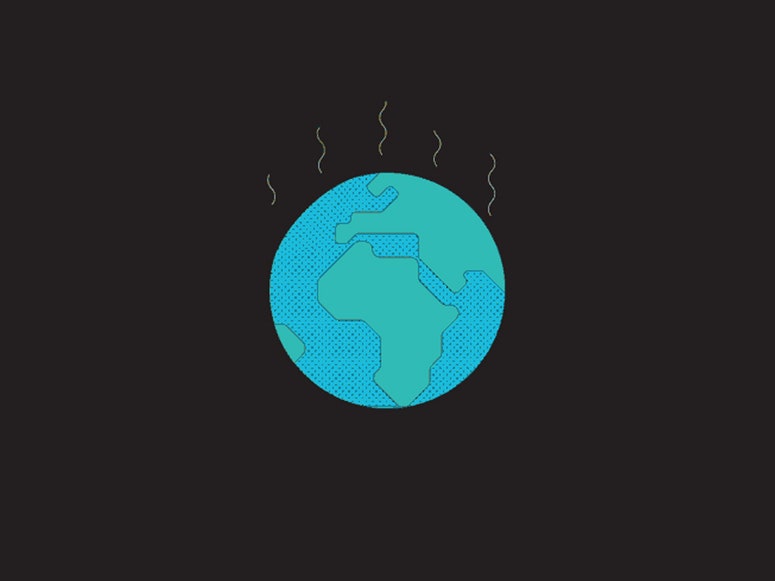Vast tracts of peat stretch across the far north of our planet, accumulated organic material that’s too wet to decompose. Though peatlands account for just 3 percent of Earth’s total land area, they store a third of its terrestrial carbon. And they’ve got climate scientists worried: As the Arctic warms, they are drying out and releasing massive amounts of carbon. People are accelerating that process by draining peatlands and turning them into agricultural fields, releasing even more greenhouse gas.
In a recent paper in the journal Science Advances, researchers put a massive number on the climate effect farming in these areas is having: By modeling historical land usage, they calculated that between the years 1750 and 2010, cultivated northern peatlands released 40 billion tons of carbon.
“When the peatland dries out—i.e., people dig drainage ditches to lower the water table of a peatland to make it suitable for growing crops—peat soil is aerated and the aerobic microbial decay of organic matter, which needs oxygen, is enhanced, thus resulting in carbon release from peat to the atmosphere,” lead author Chunjing Qiu, of France’s Climate and Environment Sciences Laboratory and the Paris-Saclay University, wrote in an email to WIRED. Any new plant material that grows and dies there will quickly decay, releasing its carbon, because there isn’t enough water to slow the processing of organic material into CO2.
Traditionally, climate scientists have focused on how much carbon we might be losing from deforestation but haven’t often investigated the effects of turning peatlands into fields. “We haven’t always done a good job of really accounting for how much carbon might be being lost from the soil system,” says soil scientist Maria Strack, who studies peatlands at the University of Waterloo but wasn’t involved in the research. “Particularly when we’re converting peatlands to cultivated land, the size of that soil organic stock is just so large that we maybe have been really underestimating the contribution of those soil carbon losses to our greenhouse gas emissions.”
Humanity, then, is turning a critical carbon sink into a source of emissions. There are, of course, underlying social drivers for this conversion: As the population continues to grow, nations have to feed more people with the same amount of land. Economically, it makes sense that farmers are converting what were once soggy expanses into cropland. “It does create quite fertile soil, but you’re losing your carbon at the same time,” says biogeochemist Chris Evans of the UK Centre for Ecology and Hydrology, who wasn’t involved in the new paper. “Because so much carbon is being lost from some of these landscapes, they’re kind of an empty carbon storage unit, really.”
Agricultural processes only accelerate that loss. Tilling dried-out peat allows more oxygen to penetrate it, which further encourages the processing of organic material into CO2. The responsible microbes will proliferate even more if farmers add fertilizers that provide them with extra nutrients. In a healthy, wet peatland, the plant material it produces should stick around and, once it dies, be incorporated back into the soggy soil, where its carbon will be trapped for perhaps thousands of years. But on a farm, the crops that the land produces are ripped out of the ground and taken away for sale.
Farmers working actively cultivated peatland will irrigate it, keeping the soil at least wet enough for the plants to grow. But if the land is later abandoned and allowed to dry out completely, it’ll turn into a nefarious fuel for wildfires. Because peat is concentrated carbon, it readily burns—but not like the massive conflagrations you’ll see in California or Australia. Instead of producing flames, peat smolders, burning deeper underground and moving laterally across a landscape. Peat fires are so persistent that they can survive underground through the winter as snow falls above, only to pop up again when the landscape thaws in the spring. That’s why scientists call them zombie fires. They can release 100 times the amount of carbon that an above-ground blaze might.
Nature is also drying out peatlands on its own as northern lands rapidly warm. The Arctic as a whole is greening as plant species march north due to climate change. The warmer temperatures mean thunderstorms are growing more common, providing the sparks to ignite huge peat fires: By the year 2100, lightning strikes in the far north could double.
It’s critically important, then, to restore peatlands that farmers have previously cultivated. “Not only are you going to reduce your emissions from oxidation, but you’re going to reduce your fire risk,” says Strack.



